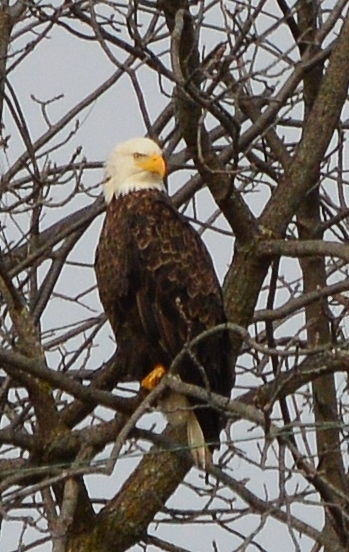Using binoculars should be easy…..
Dragonflies as Ecological Indicators
Dragonflies Are Masters of Flight! Click her to learn more. Join us and discover some nymph dragonflies and other tiny water critters that reside in our streams. We will conduct a biological water quality demo at 12:00, April 27th, at the Earth & Arbor Day celebration in Landreth Park. We are looking for Wonderful, Wacky Water Critters. Join us at creekside and learn what they can tell us about our water quality.
Don't Let Spring Be Silent - An Earth and Arbor Day Discussion - Pollinators
Hidden Signs of Spring by Kevin Mouser
The spring colors are on the way! Trees are showing signs of life with buds getting green, birds are returning from vacations in the Southern Hemisphere, and the peepers are keeping us up at night with their mating calls from any little wet area near our houses. These are all clear signs of spring. Many of us spend the better part of February and March repeating a mantra of “spring is just around the corner.” When we gather with our friends, neighbors, loved ones and fellow employees the conversation often turns to signs of spring. There is one sign of spring that many of us don’t even know about even though we drive past it, or over it, every day.
Every spring, as the cycles of light change, and the water begins to flow a little more regularly; the streams of the Ozarks begin to color up. The color comes in the forms of red, blue, and green scales on small, unknown fishes. Not unlike the migration of the birds back to our forests, the fish regain their color for spring breeding on their own time schedule. Some of them like to breed early, when only the most die-hard fish-head would consider going into a stream to look for them. Some, not unlike most of us, enjoy the warmth of a late spring day to strut our stuff. With the exception of a few of the dry or hot months of the late summer or fall, there is almost always a fish in breeding colors in Missouri.
Here in the deepest of Southwest Missouri we have several species of darter, a bottom dwelling, small fish that loves to dress to impress in the early spring. The male orange throat darter sports a beautiful combination of red and blue in his fins. These guys can be so colorful that is possible to see their colors from the shore. If you want to see one though you will have to look in the cool spring fed waters that they prefer. Greenside and banded darters both sport a coat of emerald green when they are trying to attract the attention of the ladies. You will find both of these in bigger streams like Shoal Creek, and around vegetation where their brilliant green isn’t quite so obvious. Stippled darters are a less common, but beautiful species of our small creeks. Like the orang throat darters they prefer the small springs and cool waters. They spend much of their time around vegetation. When they are trying to attract a mate they sport a bright orange belly, while the rest of the body turns very dark. They are quite the little gem to pull out of a mass of submerged weeds. These are just a few of the colorful darters of Southwest Missouri.
Spring is on the way. The darters know it, the robins know it and judging by the number of times I have glanced out the window longingly as I write this, I know it too. Brave the cold and rain a bit and get outside and welcome it. If bravery is calling your name, maybe you will even put on a pair of rubber boots and go look for some hidden signs of spring in your local streams. However you want to greet spring, please take the time to leave it a little better than you found it.
Kevin Mouser is a member of the Chert Glades Master Naturalist Chapter. He is the Special Education Science teacher, Ecology teacher and Science Club sponsor at East Newton High School. When he is not teaching, driving a school bus or sleeping, he really enjoys spending time with his wonderful wife Cristal and getting into the great waters of the Missouri Ozarks.
Photography by Kevin Mouser and Becky Wylie
- See more at: http://chertglades.org/?p=2165#sthash.yyaCUYwK.dpuf
The Timberdoodle, A Dancer Before the Stars by Jeff Cantrell
Have you ever heard of a Timberdoodle Skydance?
A Happy Ending With a Touch of Class By Jeff Cantrell
Field notes and photographs by J. Cantrell
I was ten and participated on my first guided hike and it just so happened to be in amazing Yellowstone. My folks are national park enthusiasts and my mom’s mission this trip was to grant her young conservationist the gift of a rare wildlife experience.
When we think of wildlife, endangered species stories frequently emerge and they have a gloom and doom undertone to them. Biologists strategize on how to reverse the decline of the population while the nature-loving communities offer support any way they can contribute. So unfortunately when the subject regarding threatened species comes up we are prepared for a grim outcome.
The trumpeter swan is the largest of North American waterfowl and surely one of the most stunning. The trumpeters to me simply symbolize all that is graceful and stylish in nature. A swimming swan resembles an ice skater’s refined glide and their reflection appears to pursue the bird on a blue or silver mirror. The adults are a crisp bright white, while the juvenile’s plumage matches the winter sky. They are a true conservation success story recovering from brutal market hunting for their skin, feathers and meat. Quill feathered pens were a favorite instrument of John James Audubon to tailor the groundwork sketches for his celebrated bird paintings. The swan feathers inflated pillows and mattresses for the aristocrats and colonists to rest well and dream of the promises of a fresh America. The trumpeter swan contributed a great deal to our pioneer heritage and we find their presence carved on furniture, printed on currency notes, in Native American culture, and much more.
They emerge from a population less than 70 trumpeters in all of Canada and the lower 48. They rode the conservation/preservation wave of early conservation laws and the collapse of plume hunters and feather fashions. Heroes like Teddy Roosevelt, George Melendez Wright and William Hornaday were in their corner. Today, our area benefits from captive conservation breeding flocks of Iowa, Minnesota and Wisconsin. It is fortunate the birds don’t recognize state borders and so we benefit from trumpeter swans vacationing here during the winter. After being completely absent, I have now witnessed them steadily increase in our area every single winter these past 20 years. Their occurrence restores their place in our culture and history; they certainly glide across our view with a wonderful sense of style. The story of the trumpeter swan is a real conservation story. I love happy endings especially when they have a touch of class.
I look forward to seeing you on the trail. – Jeff
FESTIVAL OF EAGLES – STELLA MISSOURI
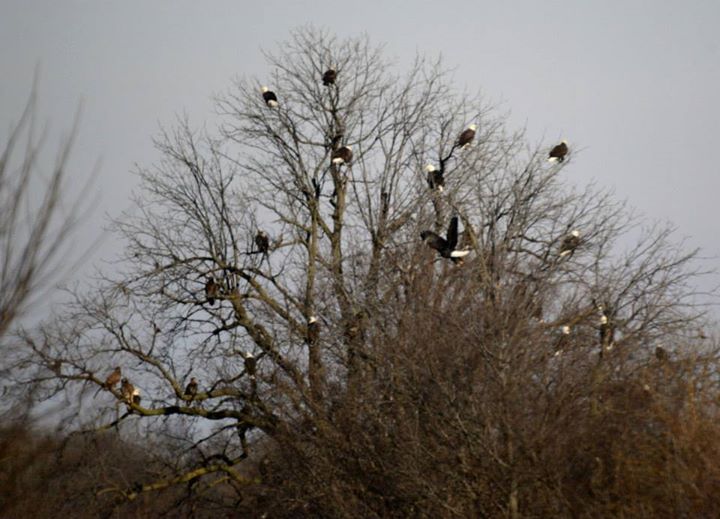



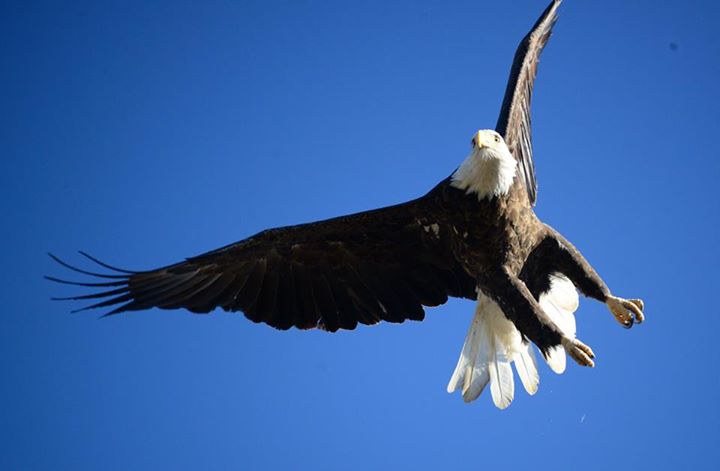
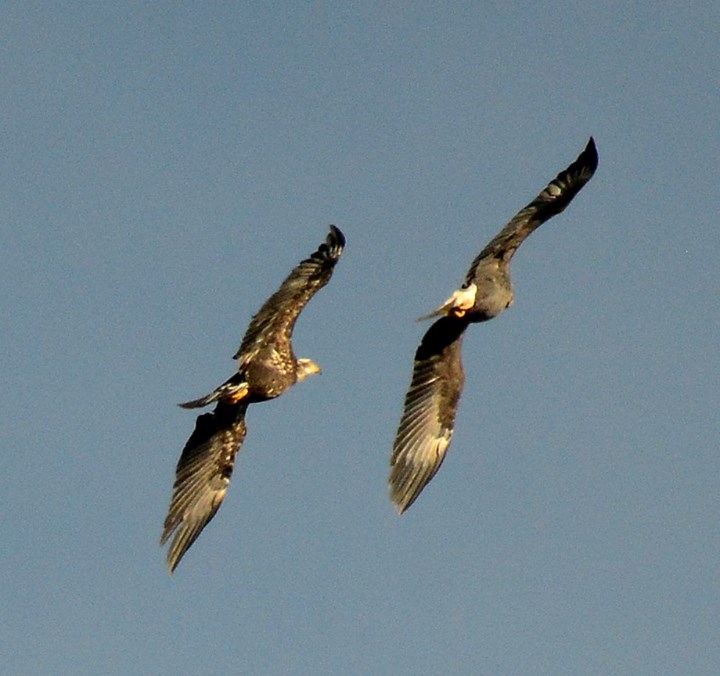

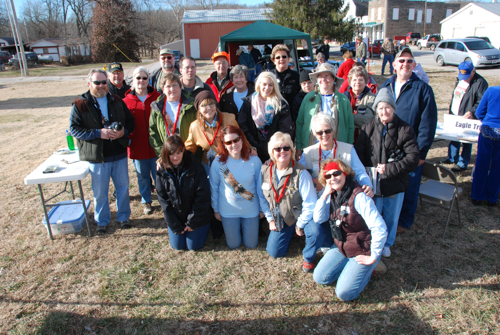
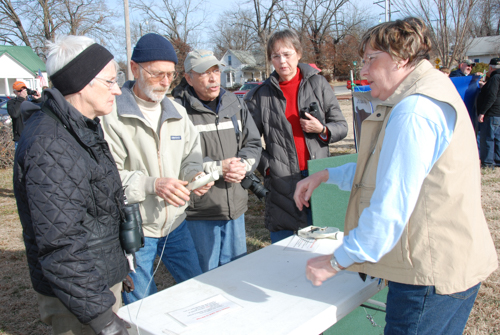

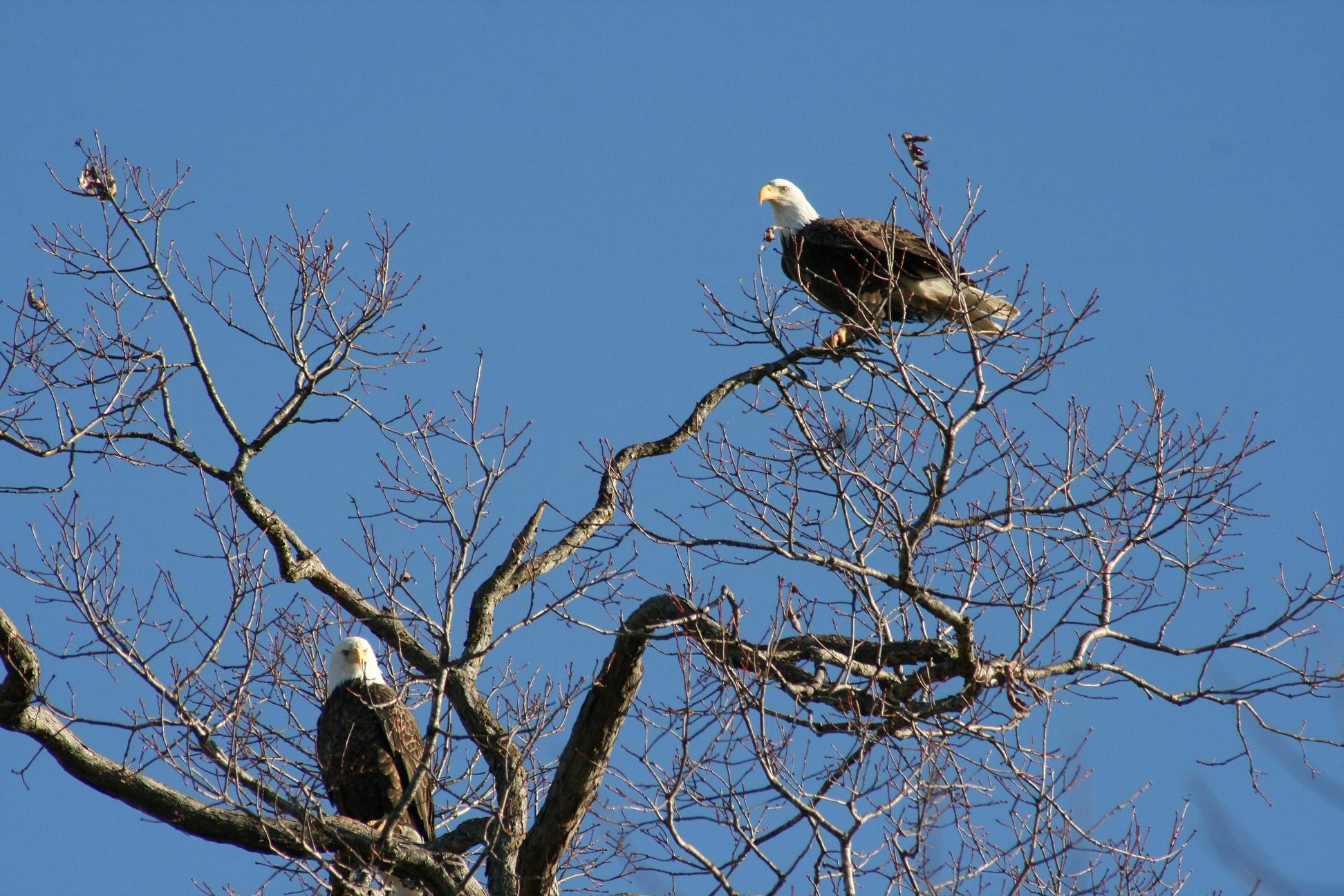

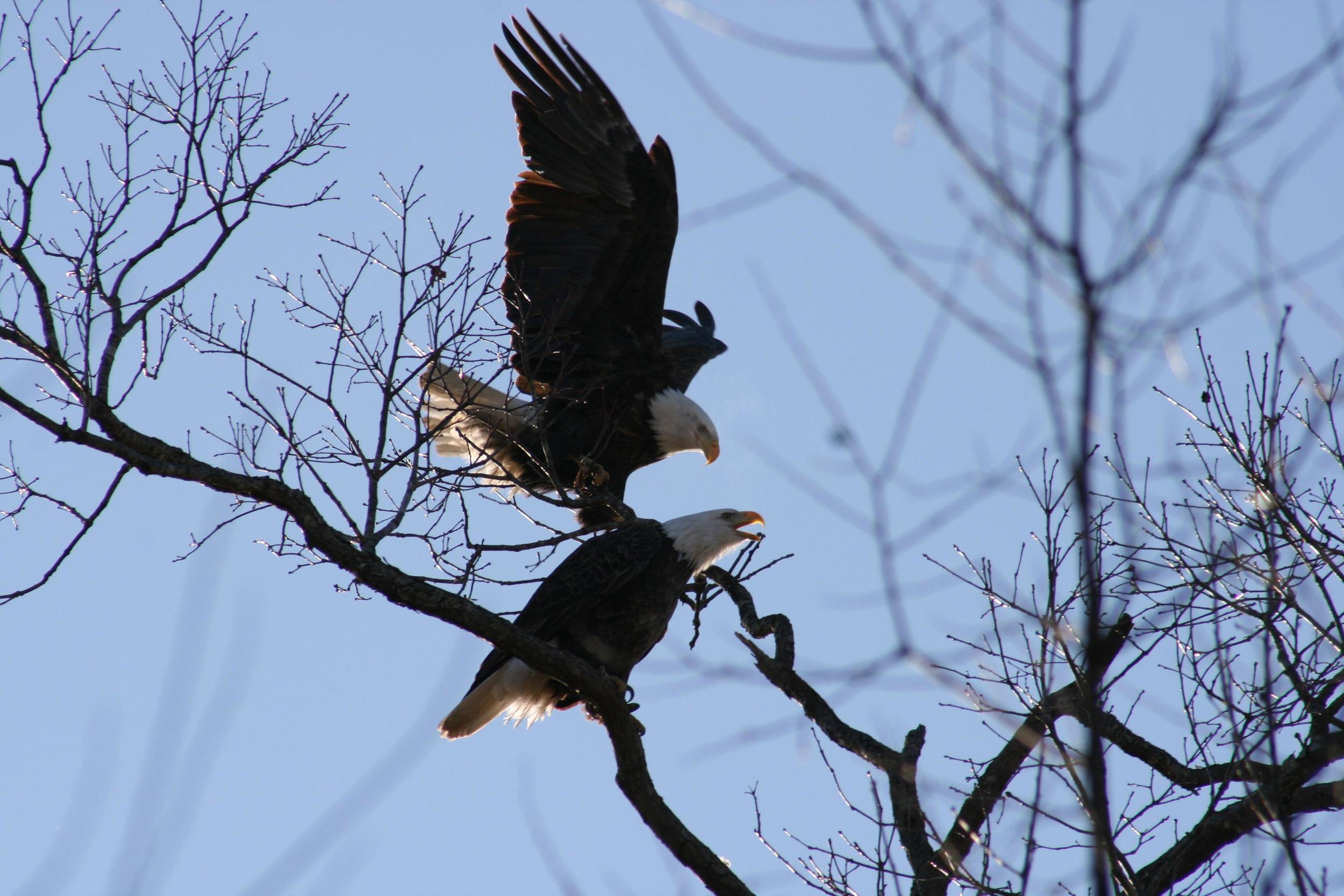



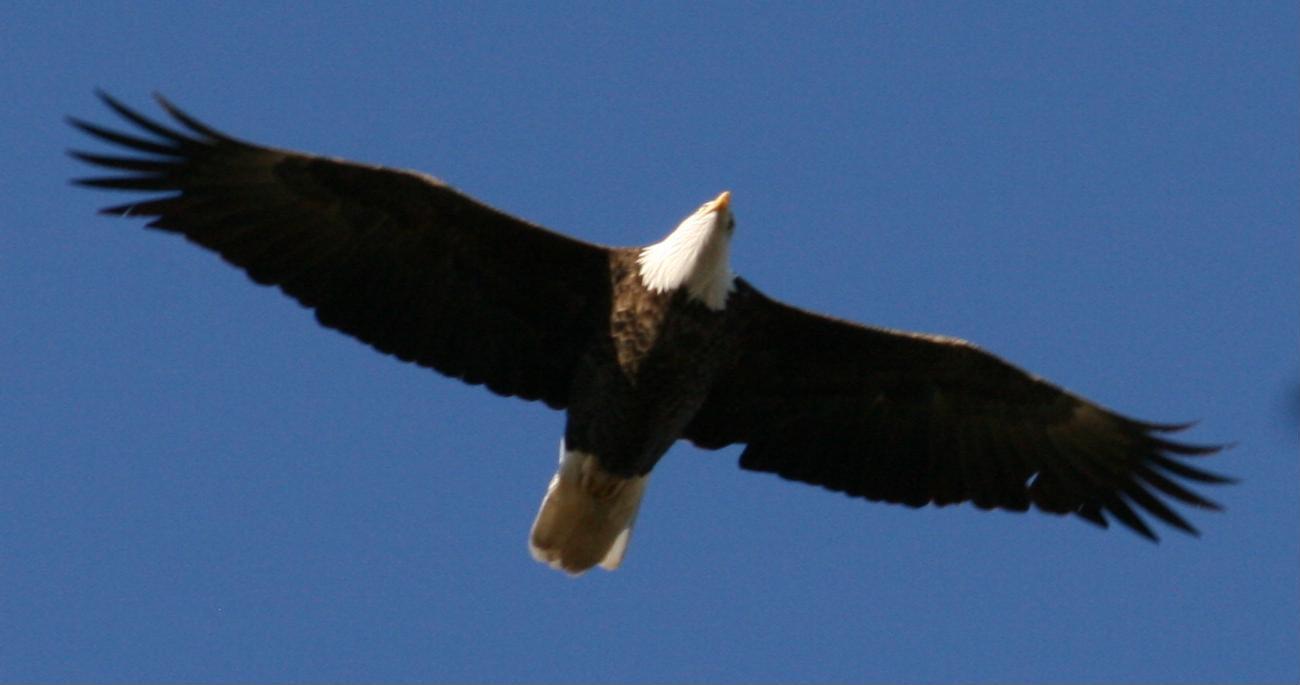

It’s that time of year again — time to view the eagles at Stella. The Chert Glades Master Naturalists will be hosting the Festival of Eagles on Saturday, January 24, 2015 at Stella, Missouri. Activities begin at 10:00 a.m. and go until 3:00 p.m. There will be scopes set up for getting up close and personal views of the eagles who visit Stella every year.
Representatives from the Missouri Department of Conservation and Missouri Master Naturalists will be available for answering questions. There will be a life-sized eagle nest replica, a life-sized eagle wingspread to compare your “wing span” to that of an eagle, face painting, and more. Volunteers will be scouting the area for good viewing opportunities and maps will be available to help you get the best views. Every year the town of Stella has some goodies available for those who visit. There will be hot coffee, hot cocoa, and baked goodies available at the Methodist Church.
For directions to Stella, you can check mapquest or google maps. Here are simplified directions: from Joplin, take I 49 south to Neosho, exit 24 (US 60). Turn left. Go 1.3 miles. Turn righ on I 49 BUS/MO 59/US 71 BUS S. Go 1.3 miles. Turn left on Lyon Dr. Go 1.5 miles. Turn right on Doniphan, go .8 miles. The road will curve left and become Hwy. D. Go 10.6 miles. Turn left onto Hwy. A. Go .8 miles and you will be in Stella. The activities will be located at the city park on the corner of Carter & Ozark streets.
So, come join us for a day of fun in the great outdoors. Dress for the weather, bring your camera and binoculars, if you have them, but mostly just come to enjoy the day. It’s a great opportunity to spend time with your family, learning about one of the great successes of conservation.
In winter, Missouri is a leading migratory stop for Bald Eagles, and Stella is a great place to see them!
Bald Eagle recovery is a spectacular conservation success story!
- 1782 – Adopted as national symbol; 100,000 nests (est)
- 1800’s(early) – Nesting eagles common in Missouri
- 1900 – Numbers declining; eagles shot on sight to protect livestock; no Missouri nests
- 1940 – In danger of extinction; Bald Eagle Protection Act makes harming, possessing or harassing illegal
- 1962 – U.S. nesting pairs dwindle to about 400; Silent Spring(Rachel Carson) is published linking the pesticide DDT to thinning eggs that break during incubation or otherwise fail to hatch
- 1972 – DDT banned
- 1978 – Listed as “endangered” under the Endangered Species Act(ESA)
- 1983 – First report of re-nesting in Missouri
- 1995 – Status upgraded to “threatened” (ESA)
- 2007 – Bald Eagles completely de-listed (ESA)
- 2007-present – More than 2000 Bald Eagles winter in Missouri with 200-300 nesting pairs!
Photography: Kevin Mouser, Ken Middick, Katharine Spigarelli, Becky Wylie
Eagle facts: Val Frankoski
- See more at: http://chertglades.org/?p=2012#sthash.0RqA0N1a.dpuf

